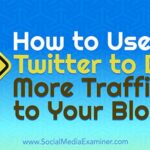One of the most significant elements of on-page SEO is creating quality ‘human friendly’ anchor text links to other areas of your blog or website. Let’s face it internal linking is a powerful strategy, and seldom talked about tactic at the same time. And it is also a tactic that is often used for three vital reasons –
- To promote other areas of your website or your blog as we mentioned
- For improving ‘user experience’
- For improving your website’s SEO
In this short and sweet post I want to share with you 6 simple yet powerful ways to improve your internal linking strategy for your blog or website, so let’s dive straight in.
6 Ways to Improve Your Internal Linking Strategy
Create a map of your website (Sitemap)
A sitemap makes the job of the search engines much simpler, by letting them know what pages (posts too if a blog) are available to crawl. You should consider creating a ‘visible sitemap’ so your visitors know exactly where they are on your blog or website, and also make it easier for them to visit and explore the most popular pages of your site. Apart from easy navigation of your whole website, it also creates internal link structure for your whole website. One should create both the sitemaps that is .html or .php from users point of view and also .xml sitemap that is essential for search engines point of view. I will explain about the sitemaps in detail in the later chapters to come after completing the Google Webmaster tools chapters.
Make use of your footer section
Many people believe that the footer section of a website or a blog is no place to put anything important these days; well I beg to differ on this matter. Just take a look at the footer of this blog also where you can notice internal links of my pages.
The footer section has its many uses… If someone likes your content enough that they read all of it, chances are they’ll have also made it to your footer section, assuming that there is little between the end of your blog post and your footer section. So take this opportunity to add several anchor text links to other interesting pages on your site. If however they don’t like your content, then there’s a problem that perhaps needs addressing fairly quickly.
Link the right keywords to appropriate posts and pages
Whether you use single keywords or long string phrases to do your internal linking for your content, ensure you’re making your anchor text links more effective by linking them to the relevant posts and pages (content), share the link juice of your high traffic posts with other relevant content that you want to promote on your site. Don’t forget to add variety in your anchor text links, and let people know where the link will take them by using attributes. You might have noticed on my blog as well that i am continuously creating an internal link whenever i find a keyword in the article related to my previous posts.
Link to your landing page
If your blog or website has a landing page promoting a particular product or has a ‘call to action’, which I’m sure it will have, then you should consider creating valuable links to that landing page too, again preferably from other content relevant posts and pages.
Let visitors know where they are
Look at your site’s main navigational menu and ensure that your visitors never become lost on your site; getting lost on a site spells bad news. Add your top performing categories, pages and posts to your main nav-bar also with the right titles. Also as an added tip, don’t use too many categories and tags, and if you’re using WordPress for your site, ensure that you have ‘breadcrumbs’ enabled to let your visitors know exactly where they are.
Install a ‘most popular posts’ plugin
Finally, if your website or blog is powered by WordPress find a good plugin that will help you to display the most popular posts on your site; this can really improve your internal linking strategy. Something simple but powerful like WordPress Popular Post plugin should do the trick. Just take a look at the bottom of this blog and you will find some related posts links that are essential to create strong internal link building structure.
So just too quickly recap the points we’ve covered.
- Create a sitemap and a visible sitemap
- Make good use of the footer section
- Link the right keywords and phrases to related content
- Link to your landing page as often as possible
- Improve your navigational links so that your visitors don’t get lost
- Install a reliable ‘most popular post’ plugin if you’re using WordPress
Follow these 6 simple steps to improve your internal linking strategy for your website or your blog. Best of luck to you.
Chapter 9: Understanding the Google Webmaster Tools








